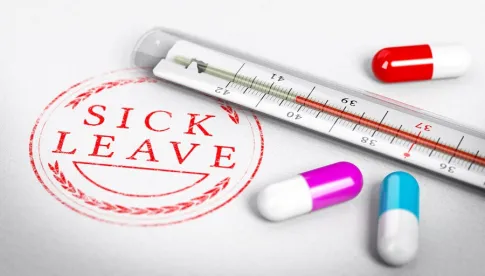New York City Mayor Bill de Blasio signed into law New York City Council Int. No. 2032-A on September 28, 2020, after the city council passed the bill a few days earlier. The legislation, which took effect on September 30, 2020, amends the New York City Earned Safe and Sick Time Act (ESSTA) and generally aligns the ESSTA with the New York State Sick Leave Law (New York Labor Law § 196-b) (NYSSLL), the accrual provisions of which also took effect on September 30, 2020.
However, some of the newly enacted amendments place additional burdens on New York City employers that are not present in the NYSSLL and were also not previously present in the ESSTA. New York City employers may want consider moving quickly to come into compliance with the law’s requirements. Specifically, and as detailed below, employers must ensure they are complying with certain notice requirements by October 30, 2020, and they must ensure that they are providing employees with a summary of accrued and used time by November 30, 2020.
New York State has not yet issued any guidance or implementing regulations to clarify the many questions left unanswered by the NYSSLL. Nevertheless, employers in New York City may want to review and prepare to comply with the new obligations created by the amendments to the ESSTA.
Certain changes to the ESSTA and how they compare with the NYSSLL are outlined below:
|
Amendment Category |
ESSTA |
NYSSLL |
|
Employer Size: 4 or fewer employees and employer net income of less than $1 million |
Up to 40 hours of unpaid safe and sick leave |
Same |
|
Employer Size: 4 or fewer employees and employer net income greater than $1 million Or Employers with 11 to 99 employees irrespective of net income |
Up to 40 hours of paid safe and sick leave |
Same |
|
Employer Size: Employers with 100 or more employees irrespective of net income |
Up to 56 hours of paid safe and sick leave |
Same |
|
Use Provisions |
Employers must begin to allow employees to accrue 1 hour of safe/sick time for every 30 hours worked up to the thresholds above, beginning on September 30, 2020. Employers do not have to allow employees to use such hours until January 1, 2021. Employers may also elect to front-load all time. |
Same |
|
Carryover |
Employees are permitted to carry over unused safe and sick leave to the next calendar year unless the employer provides full-time employees with the appropriate hours of safe and sick leave at the beginning of the calendar year. |
Unused sick leave must be carried over to the following year. |
|
Waiting Period |
Employees can use leave immediately as it accrues. |
Same |
|
Summary of Accrued/Used Time |
“The amount of safe/sick time accrued and used during a pay period and an employee’s total balance of accrued safe/sick time shall be noted on a pay statement or other form of written documentation provided to the employee each pay period.” This provision will not be enforced until November 30, 2020. |
Employees may request in writing or verbally that an employer provide a summary of the amount of sick leave accrued and used by the employee, which the employer must provide within three business days of the request. |
|
Notice |
Employers must provide written notice of employee rights at commencement of employment, or for current employees, within 30 days of the effective date of the local law (i.e., October 30, 2020). |
Currently, the law is unclear on whether there is an affirmative notice obligation. |
|
Posting |
Employers must conspicuously post the notice of employee rights at the “employer’s place of business in an area accessible to employees.” |
Currently, the law is unclear on whether there is an affirmative posting obligation. |
|
Reimbursement |
Employers are required to reimburse employees for reasonable fees/costs/expenses for obtaining supporting documentation from doctors or other third parties as requested by the employer. |
Currently, the law is unclear on whether there is a reimbursement requirement. |
|
Retaliation |
Employers may not take any adverse action against an employee for exercising or attempting to exercise rights under this law. Adverse actions have been expanded to include, but are not limited to:
|
Employees have a right to reinstatement and protections against retaliation for exercising rights or requesting leave. |
|
Enforcement |
The City of New York can bring civil litigation in court or in an administrative investigation against an employer for violating any provision of the law. |
Currently, the law is unclear on the specific enforcement mechanisms. |
|
Penalties |
Fines for employer violations include penalties ranging from $500 to $2,500. Civil penalties are capped at $15,000 in a civil action “for a finding that an employer has engaged in a pattern or practice of violations.” |
Currently, the law is unclear on whether there are specific penalties. |
Employers in New York, and specifically New York City, may wish to review the above requirements to ensure that their practices comply with the use, carryover, and accrual obligations articulated in the laws. Employers may also want to examine their current policies and make any necessary revisions. Employers in New York City may also want to consider contacting their payroll providers to guarantee that safe and sick leave accrual and use balances are included on pay statements or other documents each pay period by November 30, 2020.





 />i
/>i

